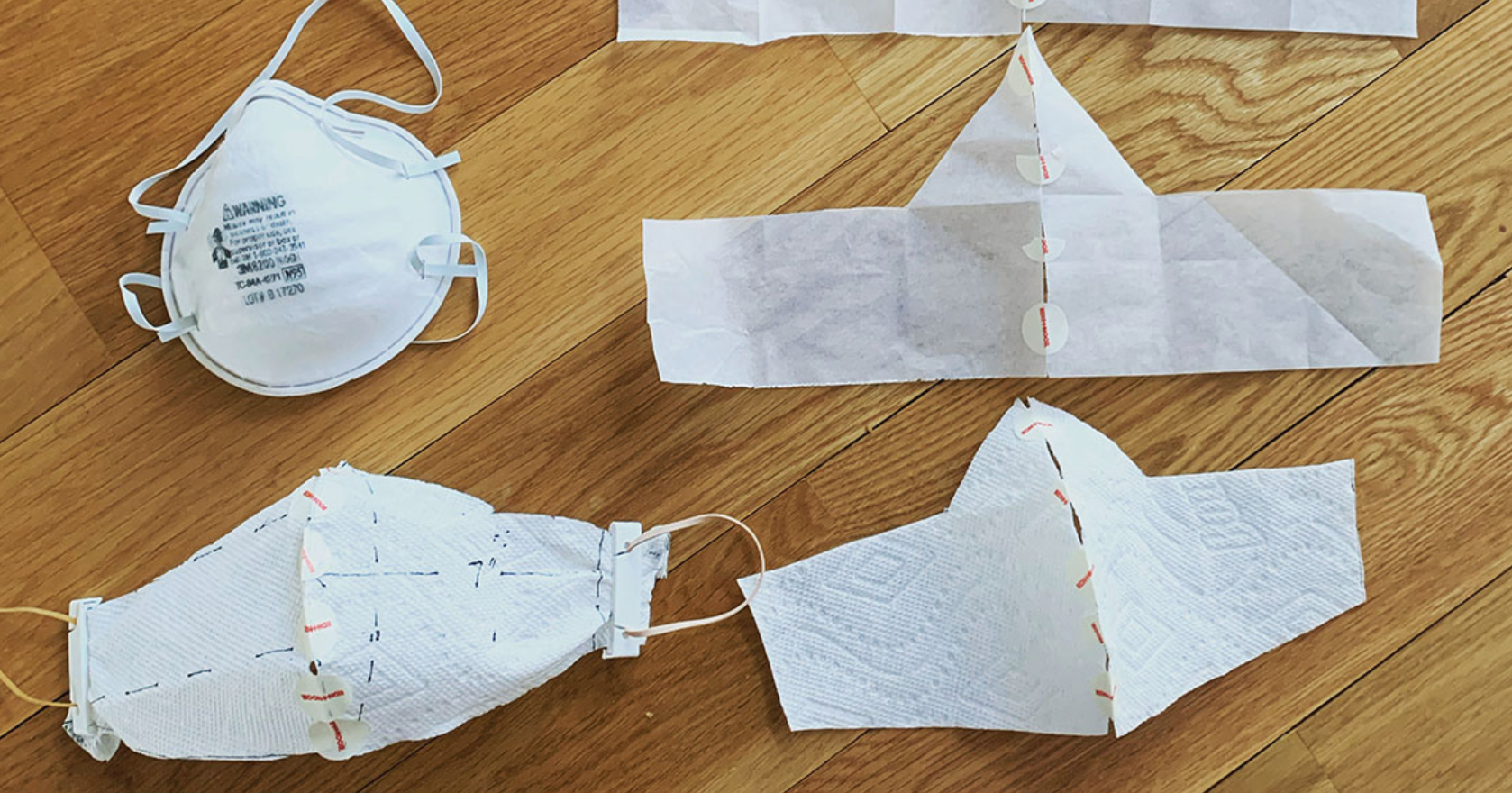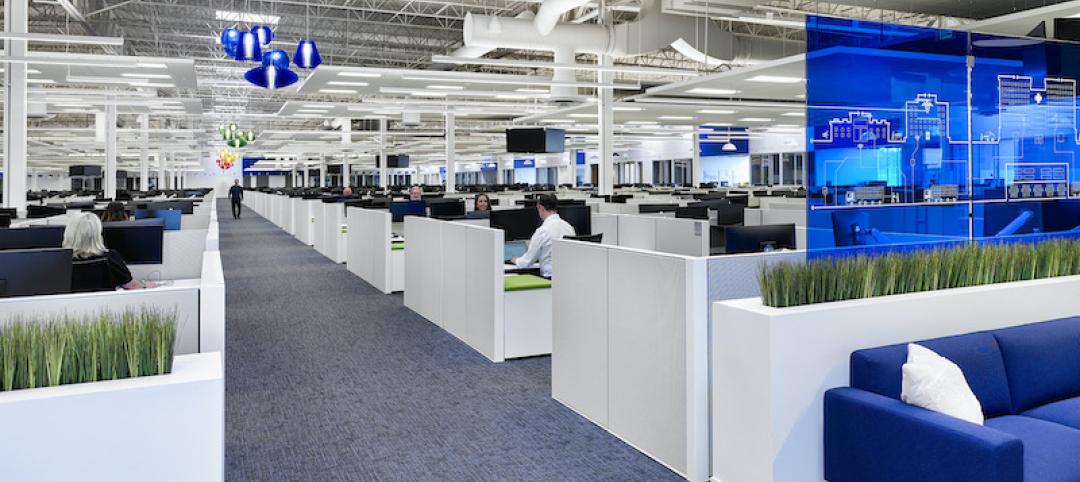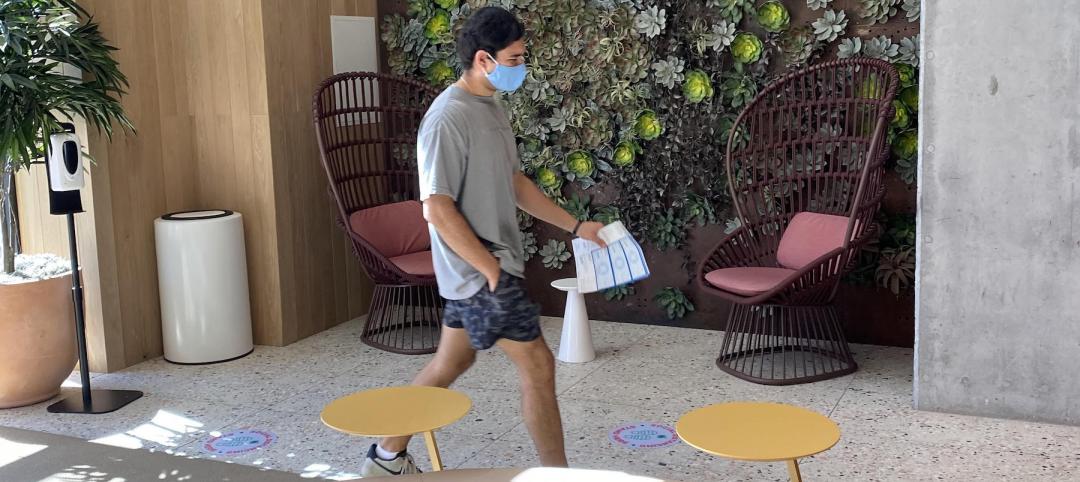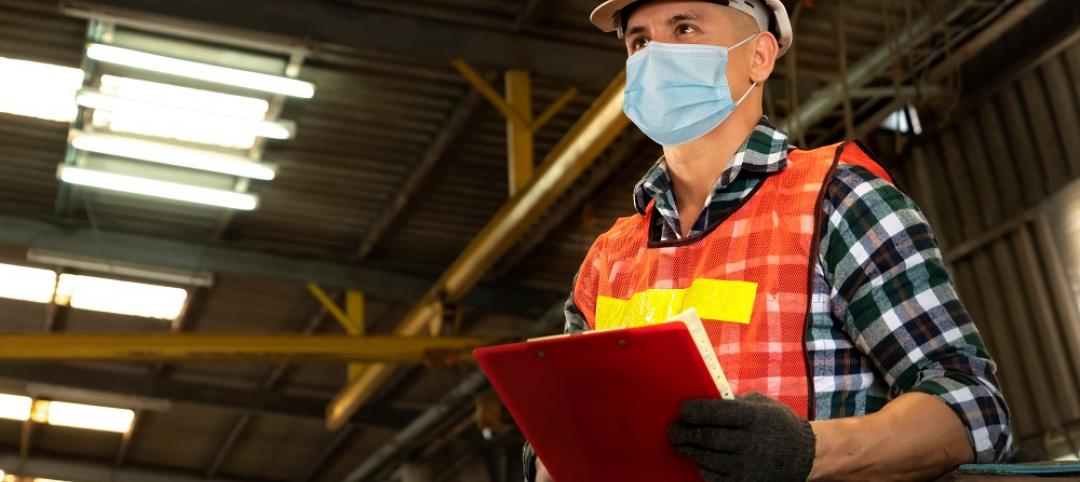CannonDesign has formed a new coalition of designers and makers working to create urgently needed protective masks for healthcare workers on the front line of the COVID-19 crisis.
The team is ideating a better do-it-yourself mask that will be able to be produced efficiently to help meet the urgent need. Initial partners include SUNY Buffalo, materialsIn, Oxford Pennant, Stitch Buffalo, and The Factory Buffalo. The toymaker Fisher Price is also supporting the initiative.
Other designers and makers interested in collaborating can reach out via this form.
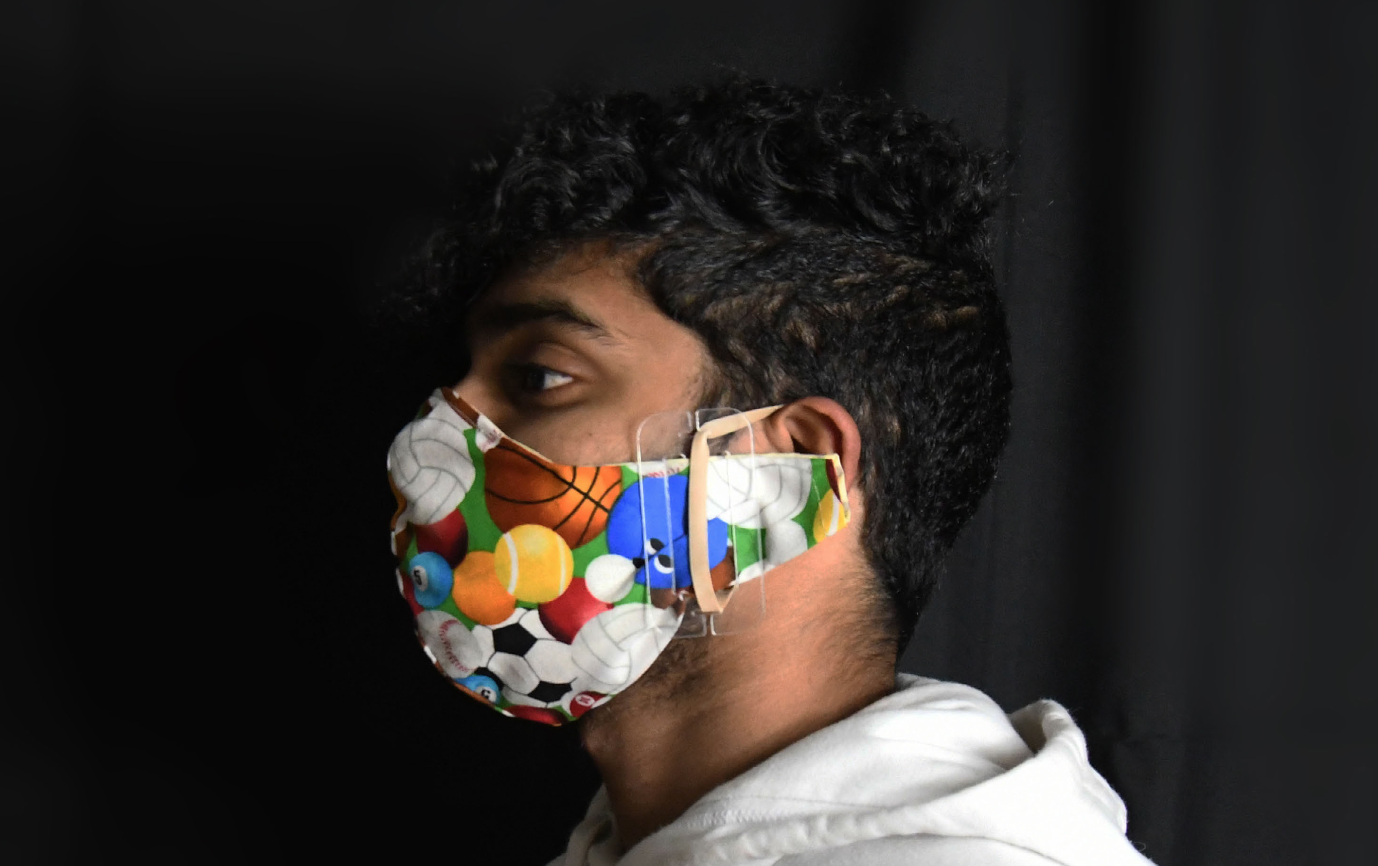 Slide clip design prototype.
Slide clip design prototype.
The team is developing working prototypes. Once the prototypes are developed, these masks can be used by those on the front line of the COVID-19 crisis, or by health workers in lower acuity environments, which would free up the regulated N-95 makes for those on the front lines.
The collaborative team will create these masks through key steps, including:
- Establishing a “patternless-pattern” sewists can replicate efficiently
- Using 3D-printed clips or rubber bands to eliminate elastics or ties from the design
- Connecting experts to makers to share best practices and guidelines
- Building local networks and streamlined paths to get masks from makers to healthcare workers
The coalition expects to ship its first large batch of masks to Evergreen Health Services, Buffalo, by Friday, April 3, 2020. Clinical beta testing will be conducted over the weekend, and the team expects to begin ramping up production starting the week of April 6.
BUT THE QUESTION REMAINS: ARE HOMEMADE MASKS REALLY EFFECTIVE AGAINST CORONAVIRUS?
There is some question whether such homemade face masks actually work—that is, do they really protect healthcare workers, COVID-19 patients, or the public?
CannonDesign Principal Michael Tunkey, AIA, addressed this question in a recent blog in which he acknowledged that the “topline scientific conclusion” is that homemade cloth masks “do very little” to stop the novel cororavirus, and that the “real solution” is to ramp up production of N95 masks and other personal protective equipment.
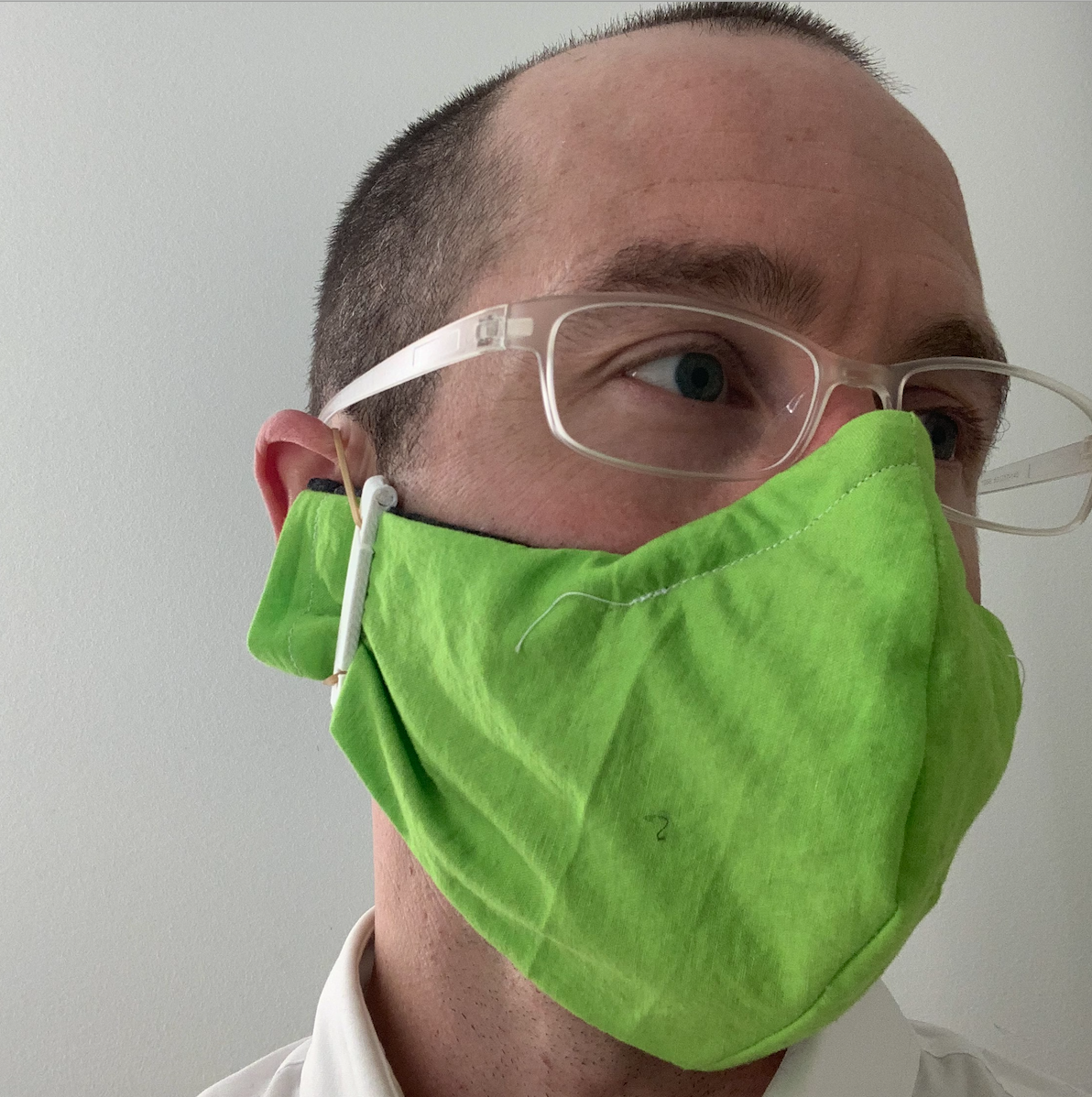 Michael Tunkey wearing DIY prototype face mask.
Michael Tunkey wearing DIY prototype face mask.
But DIY masks can do some good and have a positive impact, Tunkey concludes. His rationale:
- Call them “cloth N95 protectors.” Many healthcare workers are being forced to wear their limited supply of N95 masks for an entire shift, he notes. A properly made DIY face mask that follows the “bra cup” shape can fit snugly over an N95 mask, thereby extending the life of the N95 masks in the field.
- Leave room for a HEPA filter. A well-designed cloth face mask has some type of wire nose closure and an open pocket to insert something like a HEPA filter, although, he says, “the material most effective to use in these pockets is still murky.” Until that murkiness is cleared up by “the experts” (where are we when we need you, Dr. Fauci?), DIYers should follow this best practice.
- DIY face masks might keep your sneeze in. Tunkey acknowledges that cloth masks are “pretty ineffective” at stopping airborne particles, but states that they might help when worn by infected persons, especially the many who don’t know they are infected.
Tunkey’s bottom line on DIY face masks: “Keep sewing,” but try to connect with a community of experts who can advise you on current best practices for mask design, protocols for infection control, the needs of the local healthcare community, and the logistics of delivery.
Related Stories
Office Buildings | Mar 26, 2021
Finding success for downtown office space after COVID-19
Using the right planning tools can spur new uses for Class B and C commercial real estate.
Coronavirus | Mar 11, 2021
The Weekly show, March 11, 2021: 5 building products for COVID-related conditions, and AI for MEP design
This week on The Weekly show, BD+C editors speak with AEC industry leaders about building products and systems that support COVID-related conditions, and an AI tool that automates the design of MEP systems.
Coronavirus | Feb 24, 2021
COVID-19 spurs need for specific building solutions
A medical supply house’s new call center and a vaccination module that can handle more patients faster are among the latest projects.
Healthcare Facilities | Feb 5, 2021
Healthcare design in a post-COVID world
COVID-19’s spread exposed cracks in the healthcare sector, but also opportunities in this sector for AEC firms.
Data Centers | Jan 21, 2021
The Weekly show, Jan 21, 2021: Data centers in a pandemic world, and LGBT certification for AEC firms
This week on The Weekly show, BD+C editors speak with AEC industry leaders about LGBT certification for architecture, engineering, and construction firms, and the current state of data centers in a pandemic world.
Multifamily Housing | Jan 8, 2021
Student housing development in the time of COVID-19
Despite the coronavirus pandemic, many college and university residences were completed in time for classes, live or virtual. Here are 14 of the best.
Healthcare Facilities | Dec 10, 2020
The Weekly show: The future of medical office buildings, and virtual internship programs
This week on The Weekly show, BD+C editors spoke with leaders from SMRT Architects and Engineers and Stantec about the future of medical office buildings, and virtual internship programs
AEC Tech | Dec 8, 2020
COVID-19 affects the industry’s adoption of ConTech in different ways
A new JLL report assesses which tech options got a pandemic “boost.”
Multifamily Housing | Dec 4, 2020
The Weekly show: Designing multifamily housing for COVID-19, and trends in historic preservation and adaptive reuse
This week on The Weekly show, BD+C editors spoke with leaders from Page & Turnbull and Grimm + Parker Architects about designing multifamily housing for COVID-19, and trends in historic preservation and adaptive reuse


